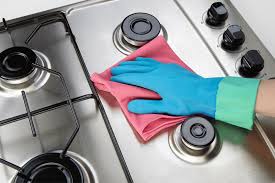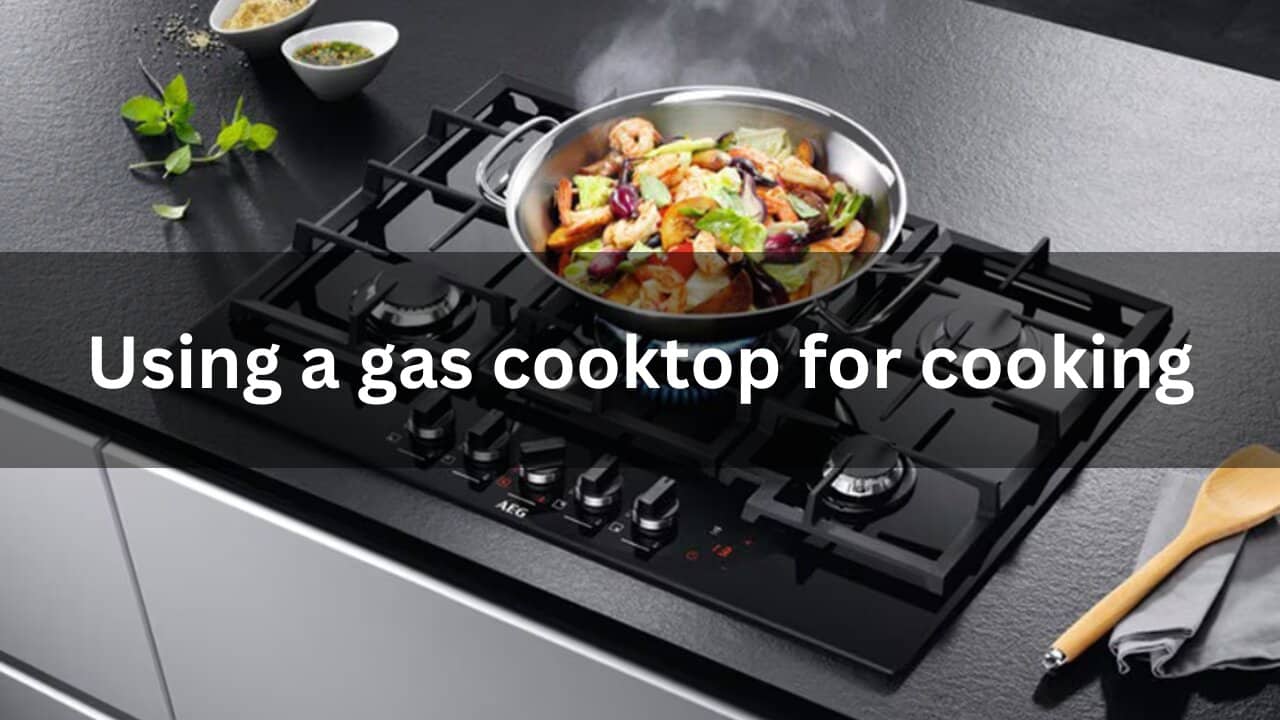Imagine a kitchen where precision meets power, where every meal can be prepared with unmatched control and efficiency. This is the world of the gas cooktop, a staple in professional kitchens and a favorite among home cooks who value performance. Have you ever wondered what makes a gas cooktop the preferred choice for so many chefs and cooking enthusiasts? Why does it command such reverence?
This article will not only uncover these mysteries but also guide you through the essentials of using a gas cooktop effectively. Buckle up, because we’re about to delve deep into a world where flames and finesse come together in perfect harmony.
Table of Contents
How to use a gas cooktop?
How to Use a Gas Cooktop?
Using a gas cooktop is straightforward once you understand its basic functions:
- Placement: Start by placing your pot or pan on the burner, ensuring it’s centered for even heat distribution.
- Ignition: Locate the control knobs, typically found at the front or side of the cooktop. Turn the knob corresponding to your selected burner counterclockwise until it clicks into the “ignite” position. You’ll hear a clicking sound as it creates a spark.

- Flame Adjustment: Once lit, adjust the flame height according to your cooking needs. A low flame is perfect for simmering sauces, while high flames are ideal for quick boiling or searing meats.
- Monitoring: Always monitor your food closely; gas flames can change intensity rapidly with minor adjustments to knobs. Developing an intuitive sense of timing and temperature is key to mastering this versatile appliance.
Advantages of Cooking with a Gas Cooktop
Gas cooktops offer several advantages:
- Instant Heat: The flame heats cookware immediately.
- Precise Control: Adjust flame size for perfect temperatures.
- Cookware Compatibility: Works well with a range of cookware, from cast iron to stainless steel.
Proper techniques for lighting a gas cooktop
Lighting a gas cooktop may seem straightforward, but there are some important techniques to ensure safety and efficiency:
- Check for Leaks: Always check for any leaks before lighting the burners. A simple soap solution can help identify potential issues.
- Ignition: To ignite the burner, turn the knob to the desired flame setting while simultaneously pressing down to create a spark. If your cooktop has an automatic ignition feature, just push in and turn—it should light up effortlessly.
- Using a Match or Lighter: If using a match or lighter, hold it near the burner while turning on the gas. Wait until you see blue flames before releasing any knobs. This method requires caution; never lean over an unlit burner.
- Flame Color: Once lit, adjust the flames immediately for optimal cooking temperature. A blue flame indicates proper combustion and efficient heat distribution.

Adjusting heat levels on a gas cooktop
Adjusting heat levels on a gas cooktop is essential for successful cooking:
- Knob Control: Each burner has its own flame control, allowing you to customize the temperature based on your dish. A low flame is perfect for simmering sauces, mid-range flames are ideal for sautéing, and high flames are best for boiling water or searing meats.

- Monitor Flame Color: A blue flame indicates efficient combustion and even heating, while a yellowish hue suggests incomplete burning—adjust accordingly to avoid uneven cooking.
- Cookware Interaction: Different cookware interacts with heat differently. Heavy pans may retain warmth, so lower the flame once they’re preheated to prevent scorching your food.
Cooking with different types of cookware on a gas cooktop
The type of cookware you choose can significantly impact your cooking experience on a gas cooktop:
- Cast Iron: These pans are favored for their heat retention and even cooking, making them ideal for searing and browning.
- Stainless Steel: Durable and non-reactive, stainless steel pots are great for sauces or boiling pasta, especially those with a thick base to distribute heat evenly.

- Non-Stick: Require lower heat settings to prevent damage and are perfect for delicate tasks like frying eggs or pancakes without sticking.
- Copper Cookware: Excellent for quick heating but requires careful attention to avoid overheating.
- Ceramic-Coated Pans: Provide easy cleanup while offering good performance on gas stoves.
Tips for cooking specific types of dishes on a gas cooktop
Here are some tips for cooking specific dishes:
- Delicate Sauces: Use a low flame to prevent scorching and stir constantly for even consistency.
- Stir-Frying: Crank the heat up high for a well-seasoned wok or skillet to achieve that coveted sear while maintaining crunchiness.
- Pasta: Bring water to a boil quickly by using a lid on your pot, then remove the lid and add salt before adding pasta for enhanced flavor.
- Slow-Cooked Dishes: Start with medium-high heat to sauté ingredients, then reduce to low and cover for gradual cooking without drying out flavors.
- Pancakes: Cook at a consistent moderate heat and adjust as needed to ensure they cook evenly without burning on one side.
Maximizing energy efficiency while cooking on a gas cooktop
To make the most of your gas cooktop, focus on energy efficiency:
- Use Flat-Bottomed Cookware: This allows for better heat transfer, reducing cooking time and energy consumption.
- Keep Lids On: Retain heat and moisture to ensure quicker cooking while saving energy.
- Match Burner Flames to Pot Sizes: A flame larger than the pot’s base wastes gas.
- Batch Cooking: Prepare multiple meals at once to minimize heating times.
- Regular Maintenance: Clean burner grates and surfaces frequently for optimal performance.
By applying these tips, you’ll enhance your cooking experience while conserving energy!
Cleaning and Maintenance
Daily Cleaning
After each use, clean the cooktop with a damp cloth to remove spills and stains. Avoid abrasive cleaners that can damage the surface.

Periodic Maintenance
Regularly check and clean the burner grates and caps. Ensure that the gas ports are free of debris to maintain proper flame function.
Professional Servicing
Schedule annual maintenance with a professional to check for any gas leaks or potential issues.
Safety Tips for Using a Gas Cooktop
General Safety Measures
- Ventilation:
Ensure proper ventilation in your kitchen to avoid the buildup of gas fumes. Use a range hood or open a window.
- Check for Leaks:
Periodically check for gas leaks by using a soapy water solution. If bubbles form, there may be a leak.
- Turn Off Burners:
Always turn off burners when not in use to prevent accidental fires or gas leaks.
Conclusion
Navigating the world of gas cooktops can open up a realm of culinary possibilities, transforming your cooking experience with precision, control, and efficiency. By mastering the basics—from lighting and adjusting flames to selecting the right cookware and maximizing energy efficiency—you can harness the full potential of this versatile appliance. With practice and attention to detail, you’ll find that a gas cooktop not only enhances your cooking but also makes the process more enjoyable. Embrace the art of cooking with gas, and let every meal you prepare be a testament to the power and finesse this incredible tool offers.
Related Articles:
Comprehensive Guide To Gas Cooktop Maintenance And Care 2024
Top Rated Best Brand Of Gas Cooktops? Latest Info 2024
Anyone Prefer An Electric Cooktop Over Gas? Latest 2024
FAQs
How do I know if my gas cooktop is properly installed?
Ensure that your cooktop is installed by a certified professional. Check for proper gas connections and ventilation. A gas leak detector can also be used to confirm safety.
Can I use any type of cookware on a gas cooktop?
While most cookware works well on a gas cooktop, it’s best to use flat-bottomed pots and pans to ensure even heating. Avoid using cookware with uneven bases.
How often should I clean my gas cooktop?
Clean your cooktop after each use to remove spills and stains. For deeper cleaning, periodically remove and clean the burner grates and caps.
What should I do if I smell gas?
If you detect a gas smell, turn off the gas supply, leave the area immediately, and contact a professional for inspection. Do not use any electrical appliances or light matches in the vicinity.




